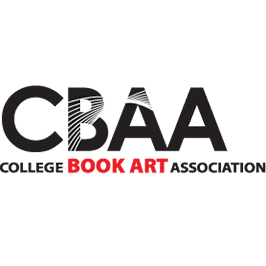16.
In part 1 of this series I wrote about the idea of the book artist having the same freedom to edit and rearrange as the writer. Now I am also thinking about the freedom of drawing—the freedom to not get it right the first time, but to erase, refine, rephrase, layer, to work the whole composition at once and gradually bring it together. To choose to leave incidental marks and/or marks of erasure as part of the whole. To have incidental marks in the first place.
17.
On incidental marks: my particular vision for the emergent book is tied to my approach to printing—lots of layers, manipulation of surfaces, flexible/brush matrices, and variable editions. But that is not necessarily the only way to approach the emergent book, and I don’t want to limit the idea to my aesthetic interests. From cartoonist Chris Ware’s Monograph:
“…I’d abandoned the traditional ‘script first, draw later’ method months earlier in favor of a completely improvisatory approach inspired by the drawings as I put them down on the page, so I had no idea what the story was about or how it would end until I was about three-quarters of the way through. In the end, the strip wrote itself and I simply let it happen. Later, I realized that the pictures were as much a part of my thinking as were my thoughts, the only difference being that I’d set them down in ink and could look at them as I thought about it, but it was up to me to pay attention and let them tell me where they wanted to go. I take this same approach to cartooning with every page I draw and write to this day.”
I bring up Ware in particular because his work is known for being extremely detailed and meticulous. He of course has the advantage of working in a medium that is drawn first and reproduced later. Still, I can imagine an artist trying to tackle the emergent book and working in the frame of “clean” design and printing. The crucial thing is the synthesis of the time of generation with the time of production. “Paying attention” and “letting the work tell you where it wants to go”—this is common advice in creative activity. Do artists that make books get to do that?
18.
While reading Ware’s Monograph I also picked up and re-read the beginning of his graphic novel Jimmy Corrigan: The Smartest Kid on Earth. I was surprised in the re-reading by how surreal and disjointed the first chapters of the story are. It makes sense though—the story was first published in serial form, in the then-newspaper Newcity in Chicago. Ware did not have the story planned before he started. He figured it out as he went along. (He also began working with the Jimmy Corrigan character when he was in graduate school, in pieces separate from what ran in Newcity.) The same kind of gradual finding can be observed in other serial forms, such as narrative television. Serial form? Longer books, working in signatures, volumes, etc.—all strategies embedded in the history and form of the book.
19.
To further enlarge what has been a very personal vision/desire: why does the emergent book need to be printed? Isn’t a one-of-a-kind (not-editioned) book a type of emergent book? The not-editioned, and/or the lo-fi small edition (pochoir, tracing, transfer, etc.) is a vastly under-explored form in the academic/professional book arts world. Are we so afraid of scrapbooking? It seems that the idea(l) of “democratic” artwork should also be applied to access to equipment and studio space. An artist absolutely can make serious book-based work at their kitchen table. Why do so many of us—myself included—endlessly rehearse and repeat the frames in which we’ve been taught? And which processes, and which artists, do those frames exclude?
20.
The emergent book is also about a desire for scale—scale as it relates to time, and time as it relates to multiple readings, each with their own pace and structure. Scale as it relates to the heft or lightness of the book in the reader’s hands. Scale as it relates to the reader’s absorption during reading. Scale as duration. Scale as reading. Reading as being-in-time. Reading as being-in-material.
21.
To return to Nancy Spero, one of the initial models for these posts—in her work you can see the potential scale of the book mapped onto a wall, or onto the space of a room. You can see the value and function of repetition and/or motif within a time structure. You can see readers entering and leaving the book at different points, how they slow down, speed up, how they return and retrace. That kind of reading, the reading that is multiple in form and time, is also a model for writing/printing/making.
22.
Now that these notes are crystallized and this post is written, the real test(s) will happen in the studio and in readers’ hands.
23.
I often have doubts.
[1] Chris Ware, Monograph, (New York: Rizzoli, 2017), 31.
Aaron Cohick is the Printer of The Press at Colorado College and the proprietor of the NewLights Press. He lives and works in Colorado Springs, CO.

